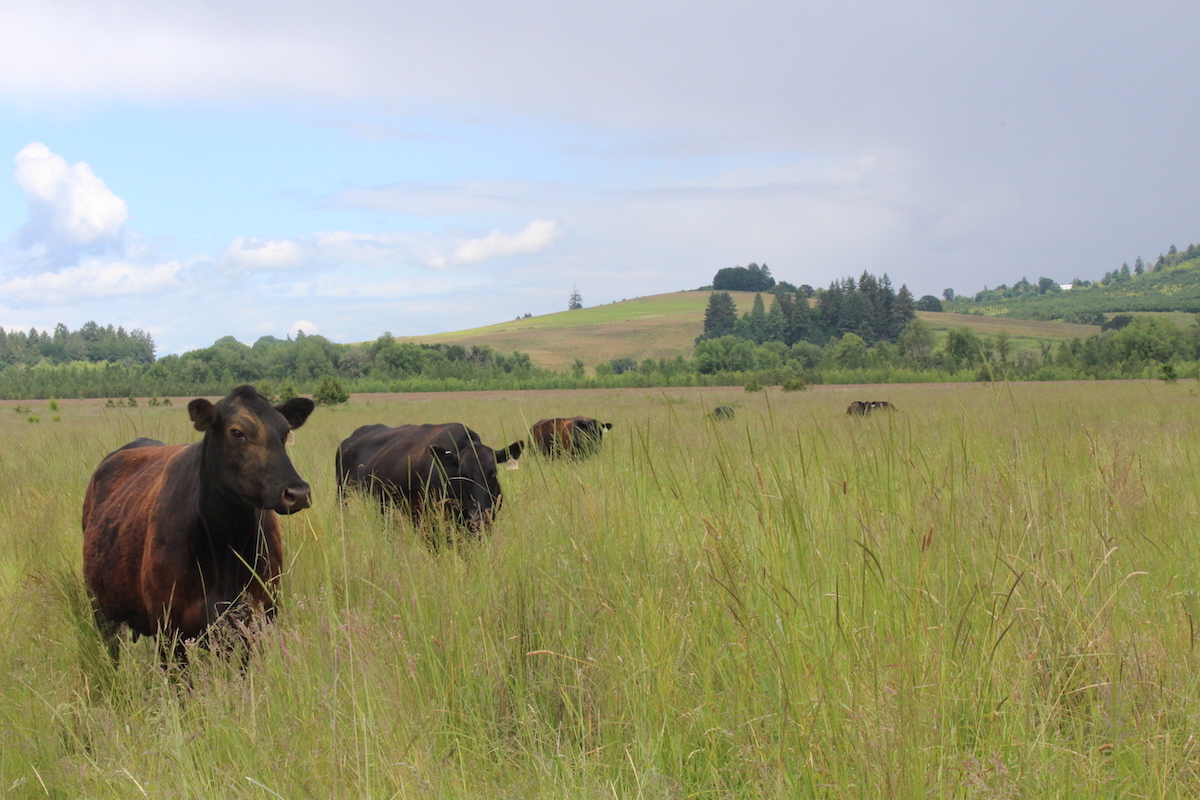
Photo: Charlotte Trowbridge, Tualatin Soil and Water Conservation District.
Thank you to Annie Bronez (Education & Outreach Specialist) and Nicole Ruggiero (Rural Conservation Specialist) at Tualatin Soil and Water Conservation District (Tualatin SWCD) for submitting this post.
Tualatin SWCD serves residents of Washington County, Oregon, including communities in the Portland-Metro area. The county contains bustling urban areas, rich agricultural lands, and diverse natural areas that provide important habitat for fish, birds, and wildlife. Tualatin SWCD works with the community to protect water, soil, and habitat by providing education, advice, and financial support.
Oregon white oak ecosystems, including oak savanna and prairie, are increasingly rare in Oregon’s Willamette Valley and rely on continued protection and management. Restoring remnant patches of oak prairie habitat to ensure it remains on the landscape is no easy task. Conservation organizations and land managers need a variety of tools to restore and maintain this iconic habitat that dozens of species of birds rely on.
The oak prairie ecosystem was formed by disturbances such as fire. In fact, this ecosystem relies on disturbance in order to exist. Without routine clearing of understory shrubs and trees the oak prairie begins to disappear and the wildlife that call this ecosystem home go with it. Not only is disturbance important for suppressing woody species, but it also helps create and maintain diversity in the understory plant communities that occupy oak prairies.
The native grasses, sedges, flowers, and patches of bare ground that result from disturbance create an “early successional” habitat. This type of ecosystem is important for many sensitive bird species in the Willamette Valley such as the Chipping Sparrow, Slender-billed White-breasted Nuthatch, Western Bluebird, Western Meadowlark, and Oregon Vesper Sparrow. These birds rely on a diverse mix of plant species in the understory of oak prairies. While some species tolerate shrubs and tall grasses, others need shorter and sparser vegetation found in more heavily disturbed prairies.

Photo courtesy of Tualatin SWCD.
Fire has played an important ecological role in Oregon since time immemorial. For thousands of years, frequent low intensity fires shaped the land and the communities of plants, animals, and people that lived there. Although ecologists and conservation planners acknowledge the important role fire plays in nature, implementing prescribed fire management is challenging in some places, especially urban and suburban areas. So, how can an ecosystem that requires disturbance be safely maintained? One answer might be cows.
That’s right, cattle are being put to work in an effort to mimic the disturbance oak prairie thrives in. While fire was a major driver in the formation of oak prairies, herds of wild animals also played a part. Enormous herds trampling down and grazing on understory plants helped clear out the land, providing annual prairie flowers the bare ground they need to seed and grow. Many ranchers, land managers, and ecologists have been exploring whether livestock can be grazed in a way that imitates historical disturbance.
The key is to determine the best way to implement it in the Willamette Valley. Tualatin Soil and Water Conservation Districtʻs Conservation Specialist, Nicole Ruggiero, collaborated with Ash Creek Forest Management LLC, Stillwater Sciences, and Metro to figure that out. Three sites in Washington County and Multnomah County, Oregon were studied from 2018 to 2020. While cattle grazing created a disturbance at all three sites, the influence on flowering prairie species was variable. In places that did not receive the experimental grazing, conditions became slightly less favorable to prairie plants and animals. Where grazing did occur, cattle created space needed for plant diversity, but also led to an increase in undesired non-native grasses and flowers, or weeds, on some sites.
Even though we know cattle are creating a disturbance, we still need further understanding of the plant community’s response in order to know how helpful cattle can really be in conserving native prairies. If cattle grazing in particular ways creates the disturbance-dependent conditions oak prairie species require, land managers will have another tool to use to restore this threatened ecosystem. The hope is that multiple strategies can be employed across the region so small patches of oak prairie become connected to created larger areas that can support more wildlife.
